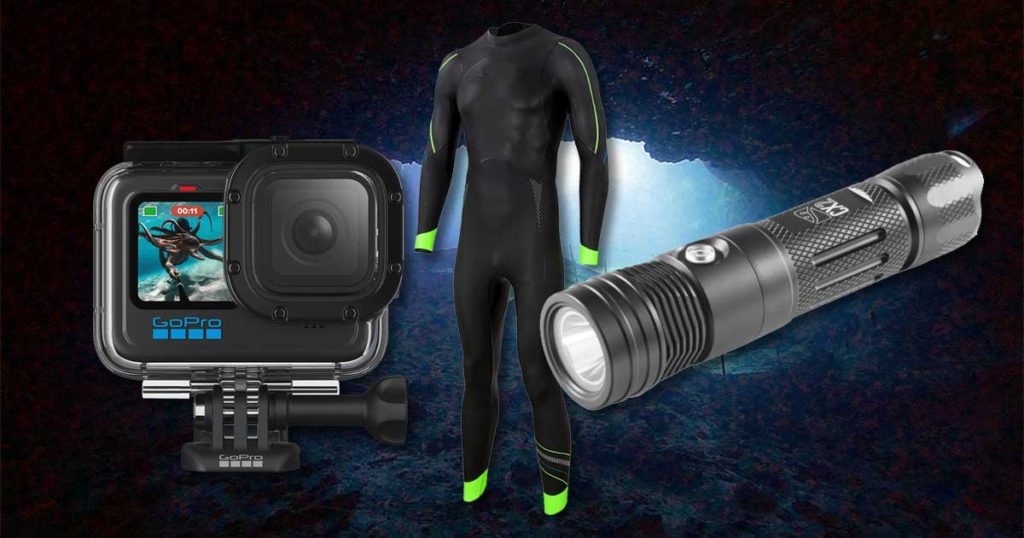Planning a visit to Blue Grotto? If so, there are three things you will almost certainly want to bring with you.
That having been said, there are also three things you are better off leaving at home. We will start with these.
Leave these behind
This list includes:
Drones
Flying drones over people is seldom a good idea. The FAA has some very specific rules regarding this. And they have stiff fines to back them up.
We’ve seen enough drones drop out of the sky that we’ve designated the Grotto as a drone-free zone. This is for everyone’s safety and enjoyment.
DPVs
You know that careless divers can decimate the visibility in the Grotto in minutes. Yet even the most callous divers will not cause as much damage as prop wash from a diver propulsion vehicle can. Add to this the very real risk of running into other divers.
For this reason, we treat DPV use the same way we do freediving. That is, you can only do it on weekdays and only if under the direct supervision of a qualified instructor.
For diver propulsion vehicles, the instructor must be a certified to teach DPVs. These instructors must also schedule DPV classes with us in advance so that we can ensure the classes won’t take place a time when we are likely to have more than a handful of other divers present.
Freediving fins
If you are a student in a freediving class, you will need your long-bladed freediving fins. We have no problem with that. At the same time, however, we’ve received numerous complaints about scuba divers using freediving fins.
Scuba divers wearing these fins seem much more likely to decimate the visibility than divers using conventional scuba fins. So, leave your freediving fins at home unless you are part of a freediving class.
Spearguns
To start, it’s illegal in Florida to spearfish in fresh water. Second, our turtles, tilapia and koi are there for visitors to enjoy. They are not there to be eaten. Lastly, you must be a very special kind of stupid to use a speargun around other divers.
Anything with an umbilical
This includes ROVs and hookah rigs. Like DPVs, you can only bring these if you make arrangements with us ahead of time.
Bring these with you
Now let’s look at three things you will most likely want to bring with you.
Full-length wetsuit
As with other north-central Florida springs, the water in Blue Grotto is 72° F year-round. And while this might be room temperature in air, it conducts heat away from your body as effectively as 40° F air would. Would you be comfortable running around in near-freezing weather in just a swimsuit or shorty? We don’t think so.
Most visiting divers find that they need a minimum of a full-length, 5 mm wetsuit. This will keep you warm longer, and the added buoyancy in the legs will also help keep your fins away from the bottom. This will, in turn, help you maintain horizontal trim so that you are less likely to stir up any silt.
Dive lights
To qualify as a cavern dive, you must keep the Grotto entrance in sight at all times. This does not mean there will be enough daylight coming into the cavern to illuminate everything you want to see.
Organizations such as the NSS-CDS and NACD, as well as all the major technical diving agencies, specify that divers in natural overhead environments must have at least three light sources. In caverns, the sun counts as one light source. Past this, you need a primary and a backup light.
Camera
Imagine trying to explain to family and friends the breathtaking views from the back of the Blue Grotto cavern. Or the time Virgil the Turtle spent several minutes nuzzling your fingers. Words alone can’t do it. Photos and videos, however, can.
At one time, capturing underwater images was an expensive and complicated process. Not anymore. Today there are many options for shooting underwater photos and videos that are both easy and affordable.
These are memories that can last a lifetime. But only if you capture them first. So go ahead. Bring a camera and make your friends and family jealous.


